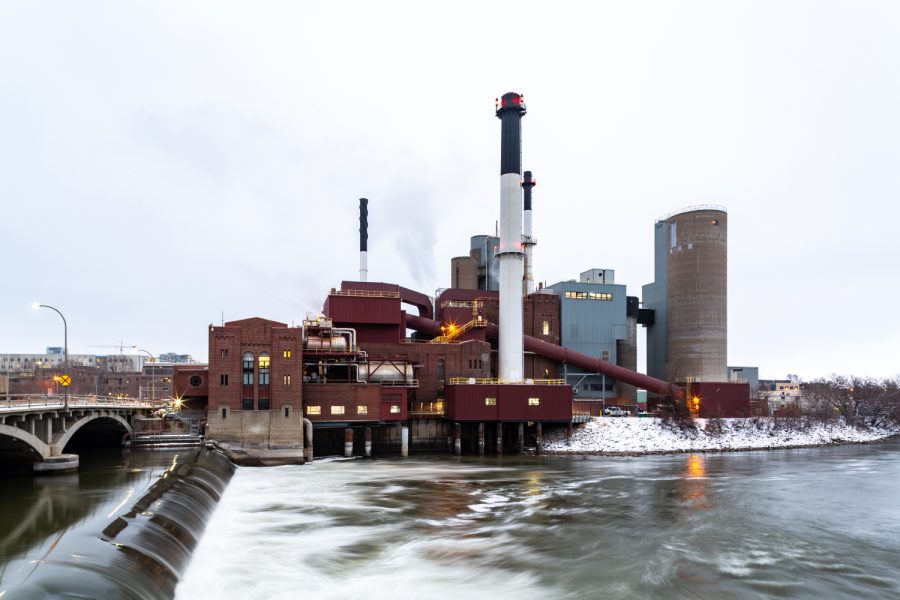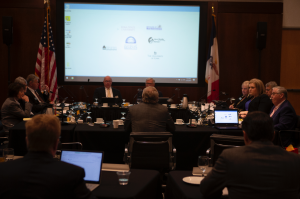Guest Opinion: UI burns the future on Earth Day
The UI continues to shovel deadly coal into its antiquated power plant on the Iowa River on Earth Day, as it creeps along to meet a commitment to bring the age of coal to an end in 2025.
Steam swirls around the UI Power Plant on the evening of Monday, Jan. 14, 2019.
April 21, 2019
What would former University of Iowa President Thomas Macbride do on Earth Day in 2019?
Would he announce UI’s recognition of the climate emergency in the latest IPCC report by global scientists and launch a plan for a carbon neutral campus like the University of Michigan?
Would he recognize the drastic measures required to cut CO2 emissions in the next few years in order to stem off climate catastrophe facing the future of all UI students, and lead a plan to divest UI’s investments from fossil fuel companies like the University of California?
Would he step up to the challenge of preparing UI students to live and work in an age of climate destabilization, and fully fund more than 980 sustainability-related courses like Colorado State University?
Would he make the UI a model campus in the Big Ten and lead a fundraising campaign to shift to 100 percent renewable-energy sources on campus like Stanford University? Or a full-fledged permaculture and local food campus like the University of Massachusetts-Amherst?
Over a century ago, the University of Iowa actually had a nationally renowned academic and ecologist as its president — the beloved Thomas Macbride.
Orchards blossomed across the Pentacrest. Food gardens prevailed. Macbride led students on classes down by the Iowa River; he got his hands dirty and launched tree-planting campaigns. A brilliant writer, Macbride even wrote a book on the Botany of Shakespeare.
In witnessing the destruction of the native Iowa prairie and its ramifications for flooding and unsustainable development, Macbride also issued a warning in 1898 to not ignore the environmental crisis at hand: “The people would act today if the situation were clearly understood. The question is whether we do the right thing now or wait until the expense shall have increased a hundredfold.”
Alas, we didn’t do the right thing; Iowa is the most altered state in the union. More than 99 percent of the native prairie was eradicated and eventually replaced with industrialized agriculture, leading to more flooding and a polluted river. A coal-fired plant rose on Burlington like a symbol of 19th century mayhem.
RELATED: Guest Opinion: UI must meet its sustainability goals
In 2019, the University of Iowa will continue shovel deadly coal into its antiquated Power Plant on the Iowa River on Earth Day, as it creeps along to meet a commitment to bring the age of coal to an end in 2025.
However, the use of another devastating fossil fuel, natural gas, has doubled in use at the plant, while efforts to burn wood pellets, miscanthus grass, and oat hulls continue at a growing but limited pace.
Last fall, the IPCC issued a stern warning for all institutions: We must cut all CO2 emissions by 45 percent in the next decade and reach zero emissions by 2050 — just to ward off the worst of climate disasters and eke out some sort of adaptive ways to impending destabilization.
Last year in Iowa, greenhouse gas emissions increased 3 percent.
“Doubtless the end of the coal, at least as an article of a mighty commerce, will arrive within a period brief in comparison with the ages of human existence,” the Chicago Tribune wrote in 1892. “How long can the Earth sustain life?”
In 2012, Chicago shut down its last coal-fired plant, citing the enormous health damages to local residents and environmental costs.
In 2019, every day that the UI burns coal and natural gas, and relies on a coal-fired grid for electricity, it is burning the future of its students, faculty, and staff.
If Macbride were here for Earth Day this year, he would probably be down at the river, planting trees, asking why the UI hadn’t joined the University of Bristol this week in declaring a “climate emergency” and its intentions to be a carbon-neutral campus by 2030.
That would be a real Earth Day to celebrate.
— Jeff Biggers
Jeff Biggers served as the Writer-in-Residence in the Office of Sustainability, and is the author of “Reckoning at Eagle Creek: The Secret Legacy of Coal in the Heartland.”






